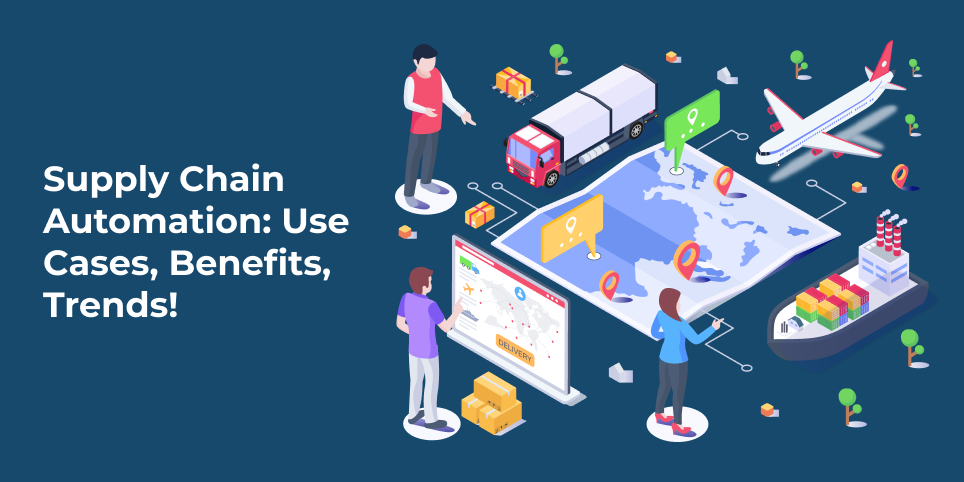
Supply Chain Automation: Use Cases, Benefits, Trends!
Digital transformation is changing the landscape of business ventures. Innovative technologies are remolding the business models, by digitizing every facet of the product’s lifecycle.
Intelligent edge ecosystems are incubating automation across the supply chains. Backing this up with stats and facts:
The global logistics automation market is expected to garner USD 147.4 billion by 2030, growing at a CAGR (Compound Annual Growth Rate) of 11.9% from 2022 to 2030.
According to Gartner, 50% of the global giants are to automate their supply chains with the integration of IoT, AI, and other innovative technologies by 2023.
What is supply chain automation?
Supply chain automation involves the use of digital solutions to streamline process operations, and eliminate the need for human intervention. Automation in the supply chain provides resilient, agile, accurate, and accessible business workflows.
Completing the same task takes less time, fewer resources, and lesser dependency on labor. This means spending less, you can achieve higher operational efficiency.
Factors driving faster adoption of automation in the supply chains are:
- shortage of human resources
- increased operational efficiency
- higher precision & accuracy
- reduced human errors
- minimal human intervention
- increasing consumer expectations
- cost & time efficacy
Benefits of Supply Chain Automation:
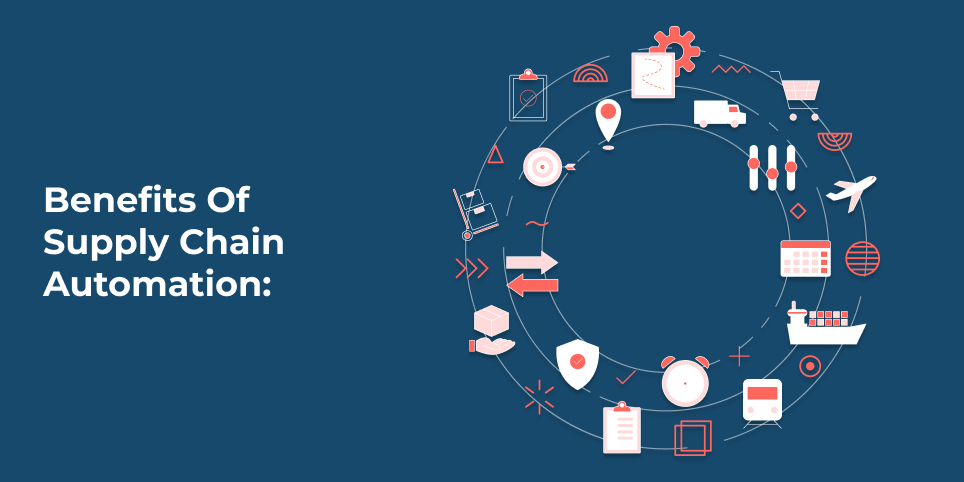
- often there is a risk of injury in handling heavy loads manually. Automation in manual handlings enhances safety measures at the organizational level.
- Automated inventory management can save time, operational cost, and labor costs, as well as eliminates human errors
- Automation enables quicker responses to unexpected circumstances. This encourages organizations to adapt to rapidly changing business objectives.
- 24*7 of 365 days monitoring across the supply chain enables transparency and enhances traceability of the operations.
- A centralized platform connecting all the systems offers comprehensive visibility across the supply chain.
- Real-time data keep the employees up to date giving them the live status of product cycles. Employees can rely on this information to act accordingly and instantly.
- Transparency and traceability of the supply chain are crucial for consumer satisfaction as well. Consumers are always eager to know about how their orders are being processed in the supply chain.
Use Cases of Supply Chain Automation:
1). Automation in Inventory management:
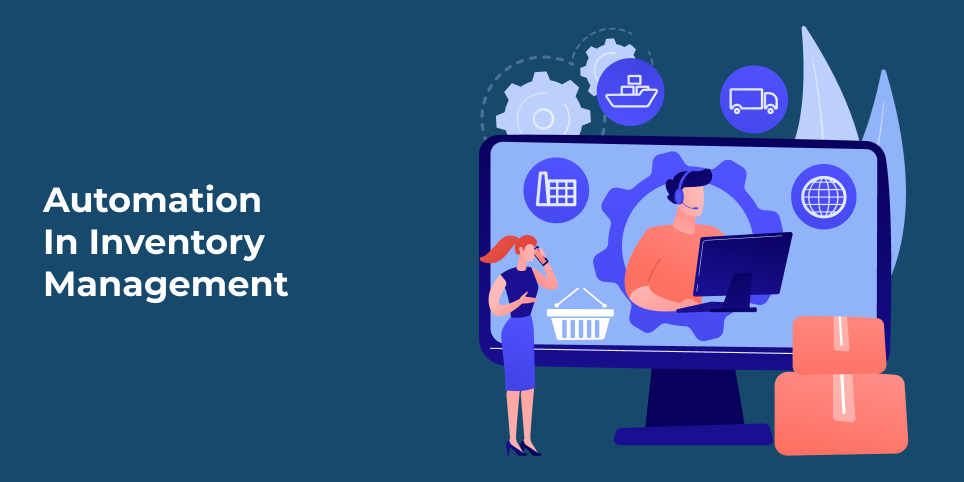
Orchestration of a supply chain is crucial for the proper functioning of a product lifecycle. The supply chain involves operations in many stages. Maintaining accurate records for each stage manually can be a tedious and time-consuming job. Human errors and mishandlings can lead to detrimental effects on operational efficiency.
With automation in inventory management, you can:
- forecast the demand for different products from various consumer segments.
- implement real-time monitoring of inventory count, with RFID or barcode scanners.
- maintain a record of product count from different manufacturing units.
- track product’s manufacturing date & time as well as product’s shelf life.
- track & locate assets by geolocation data.
- get notified about which stock is to exhaust soon.
2). Automation in Logistics Management:
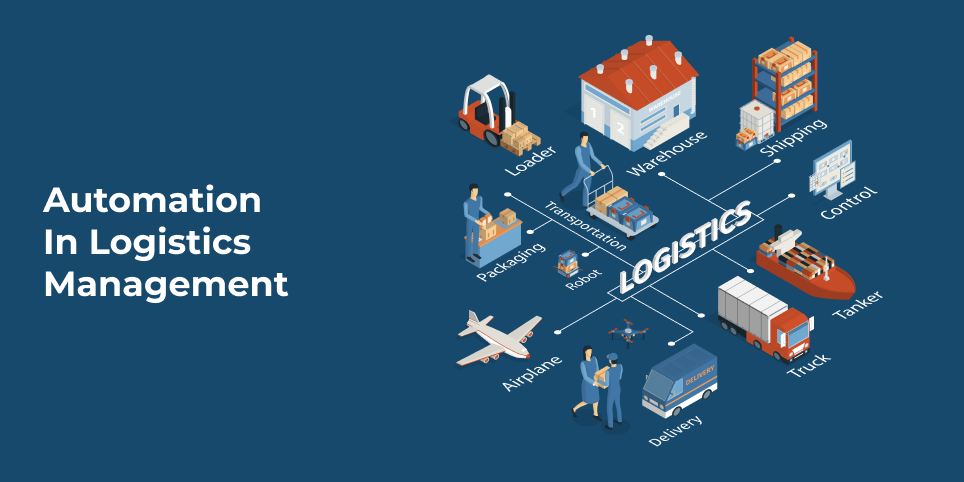
An optimum delivery path can save both time and fuel costs. Automation in logistics management can help you choose:
- the right path of delivery
- the right transportation media
- allocation of orders along a particular route
With Automation in logistics you can:
- devise delivery routes
- track travel trips
- flag routes
- check on climate parameters for the defined route. (Tracking temperature deviation is crucial in cold chain delivery operations)
The delivery path can cover cities and countries. It becomes mandatory to carry along all the transit documents during the delivery trip. Digitizing these documents can be a big relief.
3). Automation in Warehouse management:
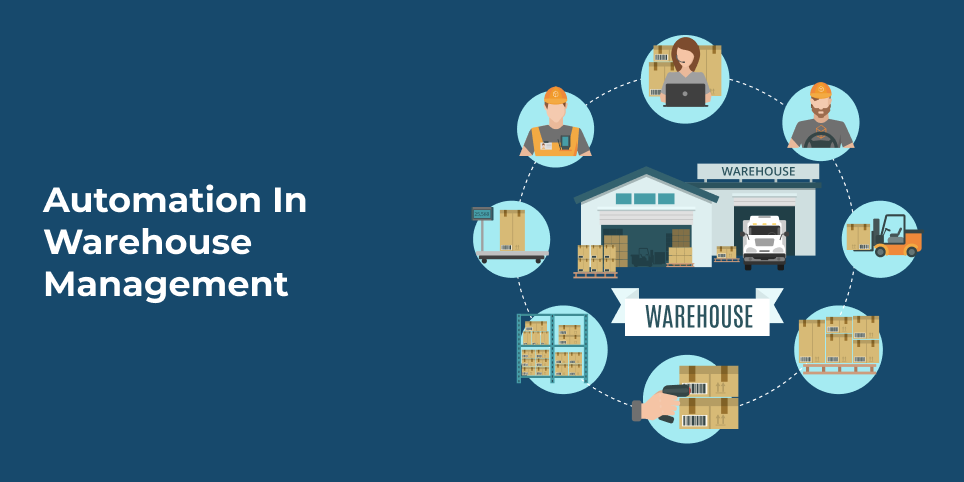
AGM (Autonomous Guided Vehicles) and AMR (Autonomous Mobile Robotics) can be immensely useful to leverage automation in the supply chain.
You can use image analyses to count the number of palletized boxes in a warehouse.
You can use warehouse automation to:
- derive the best pickup routes.
- automate loading, unloading, and heavy lifting.
- generate order lists and packing slips automatically.
- automate packaging recommendations relevant to the product
4). Automation in sales order management:
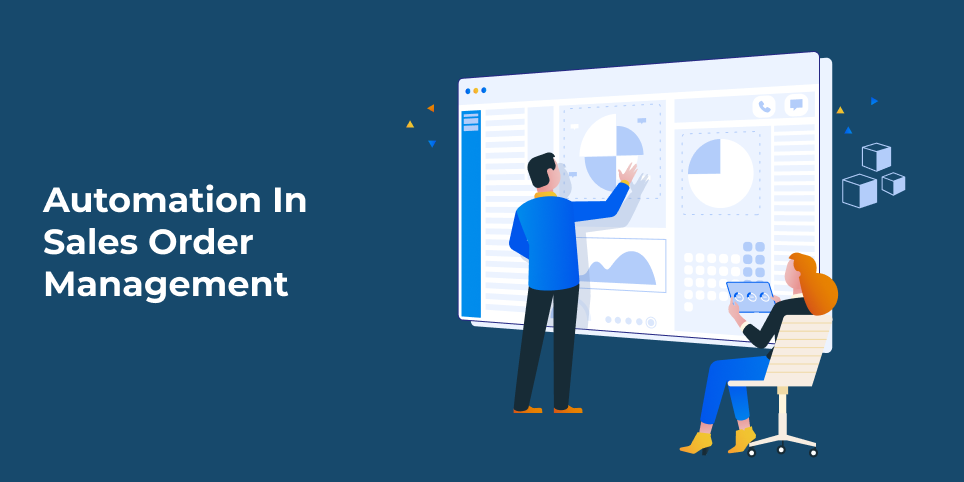
By leveraging automation in sales order management, you can automatically:
- respond to orders
- confirm the orders
- make order entries
- aggregate orders from multiple channels
- schedule order delivery date and time
- roadmap order routing
- track order deliveries.
5). Automation to source new suppliers and manage supplier relationships.
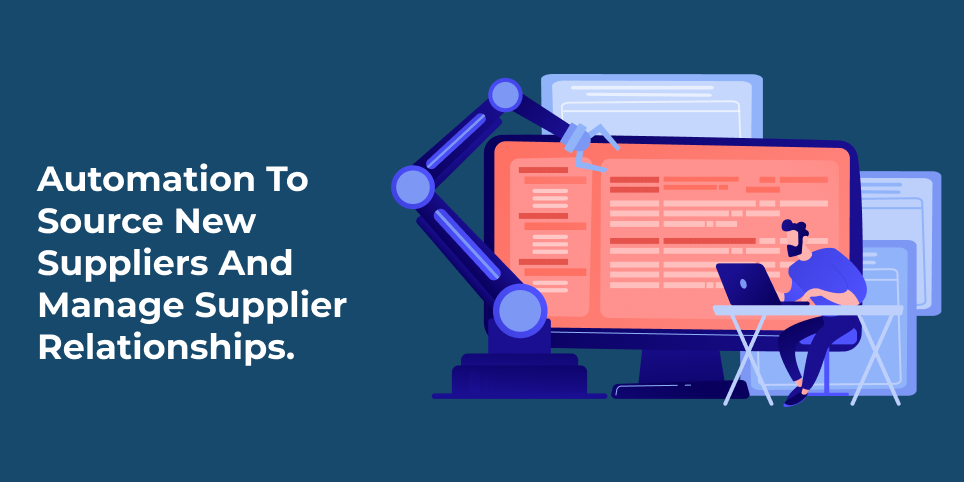
- You can use automated recommendations to source relevant suppliers.
- Information regarding new suppliers is automatically collected, verified, and sent for approval by the higher authorities.
- Perform automated Quality Assessment of new supply chains.
- Automated management of legal contracts with the suppliers makes it clear what you expect from them and where their accountability lies.
- By setting rules, policies, and restraints you can present your intentions and expectations.
- Automated monitoring and auditing of supplier activities improve transparency in managing supplier relationships.
- Also, if you are a supplier, automated response to client requests round the clock, makes the quotation process agile. Timely quotations can increase the chances of winning the bids.
Trends in Supply Chain Automation:
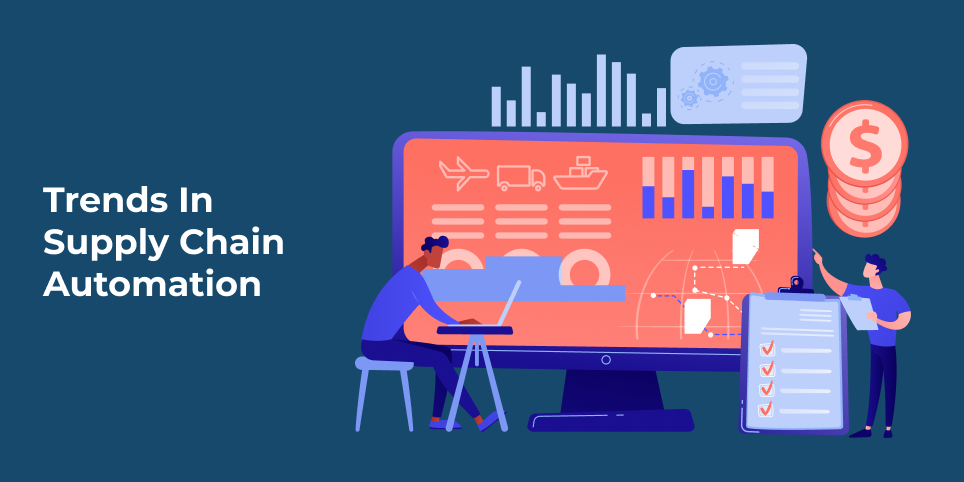
Technology integration is vital to leverage active supply chain strategies across the product life cycles. Some breakthrough technology trends creatively disrupting Supply Chain automation are:
- The advanced supply chain analytics enables real-time visibility into the supply chain owing to the breakthrough technologies like AI, IoT and AR. Innovations in AI & AR are unstoppable and are creating new avenues for futuristic growth
- Ground-breaking technologies like AGV (Autonomous Guided vehicles), AMR (Autonomous Mobile Robotics), and RFID (Radio-Frequency Identification) are changing the landscape of warehouse management.
- Cloud-based solutions are to electrify the future of supply chain automation. Cloud-based solutions (for example SaaS (Software as a Service)) can provide highly reliable, and completely safe supply chains that can enable organizations to maintain a competitive edge.
- The inclination toward a sustainable business ecosystem is gaining traction with increasing awareness regarding environmental conservation. A sustainable approach to supply chain automation can be leveraged by eco-friendly packaging designs, green transportation methods, and energy-efficient electronic gadgets as well as a circular supply chain operating on the 3Rs (Reduce, Reuse, and Recycle)
Automate Your Supply Chain With Robust Software Solutions!
Automation is a wildfire, and it is to rise higher and higher. AI and AR are revolutionizing industrial processes. Automation can lift a load from all the manually operated tasks, saving a lot of time, energy, money, and resources.
You must choose the perfect set of technologies for automating your supply chain. Only then you can enjoy its benefits.
As an entrepreneur, I can help you automate your supply chain in line with your budget. After thoroughly studying your business workflow and the entire product cycle, we identify areas in the supply chain that can give maximum payback on automation.
We select relevant technologies for automating your supply chain, devise an implementation roadmap, automate your supply chain, and provide support for automated solutions.
Let us automate your supply chain right away!



